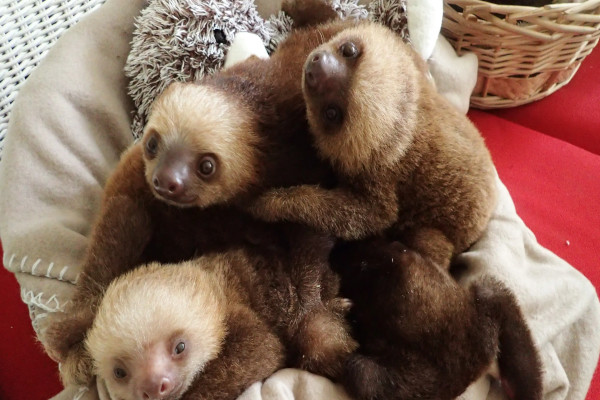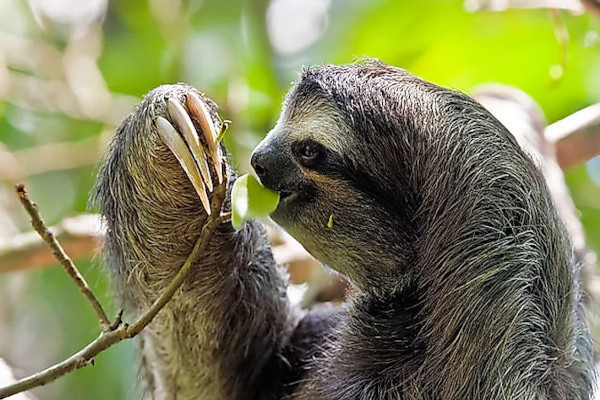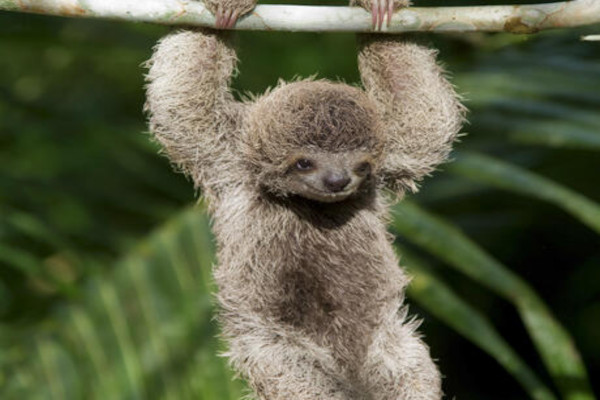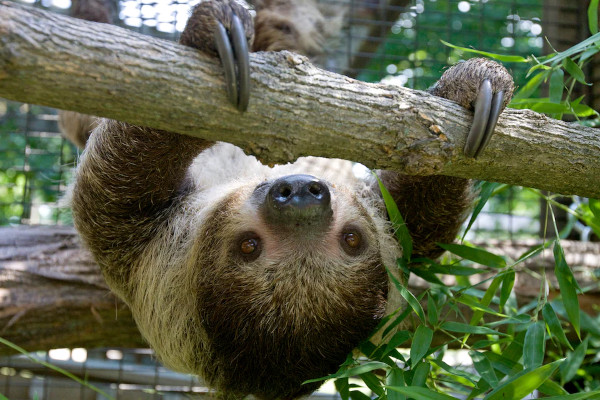Welcome to the intriguing world of sloths, where time seems to slow down and nature’s gentlest creatures find solace among the treetops.
These enigmatic mammals have captivated the imaginations of nature enthusiasts and animal lovers alike, as their unique characteristics and relaxed lifestyles have earned them a place of admiration in our hearts.
In this journey of exploration, one question arises: How many sloths are there in the world? Join us as we delve into the realm of sloths, uncovering their habitats, lifestyles, and the estimated population of these charming creatures that roam the forests of Central and South America.
Together, let us embark on a fascinating quest to discover the secrets of the sloth population and appreciate the wonders they bring to our natural world.
How many sloths are there in the world?
Estimating the exact global population of sloths is a challenging task due to their elusive nature and the vast and often remote regions they inhabit. However, researchers and conservationists have made efforts to assess their numbers and gain insights into the overall sloth population worldwide.
Sloths are found exclusively in the rainforests of Central and South America. They are divided into two main species: the two-toed sloth (Choloepus) and the three-toed sloth (Bradypus). These species have different habitat preferences and behaviors, contributing to variations in their populations.
While population estimates can vary, it is generally believed that there are several hundred thousand sloths in the world. The population distribution is not uniform, with larger concentrations found in certain countries such as Costa Rica, Panama, Brazil, and Ecuador, where favorable habitats support thriving sloth populations.
However, sloth populations face numerous challenges, including habitat loss, fragmentation, and the impacts of climate change. Deforestation, driven by agriculture, urbanization, and logging, poses a significant threat to their survival. Encroachment on their habitats limits their range and availability of resources.

Sloths conservation
Conservation organizations and researchers are actively working to study and protect sloths. Through field surveys, camera trapping, and genetic analysis, scientists gain valuable data on population dynamics, habitat requirements, and the impact of human activities on sloth populations. These efforts contribute to conservation strategies and initiatives aimed at safeguarding sloths and their habitats.
Sloth conservation focuses on preserving and restoring their forest habitats, raising public awareness, and advocating for sustainable practices that mitigate the threats they face. By addressing the root causes of population decline and implementing measures to ensure their long-term survival, there is hope for the preservation of sloths as an integral part of our natural world.
Sloths in Costa Rica
Costa Rica, nestled in the heart of Central America, is a biodiversity hotspot and a sanctuary for various wildlife species, including the charming sloths. While an exact count of the sloth population in Costa Rica is challenging to ascertain, the country is renowned for its significant population of these arboreal creatures.
Costa Rica’s diverse ecosystems, ranging from lush rainforests to cloud-covered mountains, provide the ideal habitat for sloths. The country is home to both two-toed and three-toed sloths, each with distinct characteristics and behaviors. These slow-moving mammals spend the majority of their lives high up in the canopy, feeding on leaves and relying on their excellent camouflage to evade predators.
Estimating the population of sloths is a complex task due to their elusive nature and the vastness of their habitats. However, research and conservation efforts in Costa Rica have shed light on their numbers. According to various studies and field observations, it is estimated that there could be several thousand sloths residing in Costa Rica.
Are sloths in danger of extinction?
The answer to this question is yes and also no. Why?
Because there are two particular species of which there are not many specimens, and those that exist, they live only in a small specific area of habitat.
However, 4 of the 6 known species are not in danger of extinction. There are many living specimens and in scattered areas.
What cannot be known is to date, the total population of these animals worldwide.
What species of sloths are endangered?
One of the species that is in danger of extinction is the collared sloth.
A problem for which these species are in danger of extinction is, for example, due to the effects of urbanization.
Sloths often need to traverse power lines, rather than trees, and often are victims of electrocution.
Other sloths that are in the red zone of danger are the maned three-toed sloth and the pygmy three-toed sloth.
The only place where you will find now a days to the three-toed pygmy sloth is Isla Escudo de Veraguas, which is not a not very big island outside the coast of Panama.

Sloth with her baby
There is a local conflict between the government and the inhabitants of that area. Said conflict does not at all favor having plans for the conservation and care of the three-toed pygmy sloths.
The population of these animal has mainly declined due to changes in the environment.
Pygmy sloths resemble brown-throated sloths but weigh a lot lesser than brown-throated species.
Maned sloths only live in Brazil and are currently vulnerable. Maned sloths are the largest species among the three-toed sloths.
There is not much information available about how well they do in captivity. These species are named so because of their lion-like mane.

tree leaves
See also: Sloth private sloth tour in the rainforest
Where do they live?
You can find them in Central America and in the highest part of South America.
They also live in some places in Brazil and even Peru.
They are usually in the upper parts of trees in tropical rain forests.
There they spend most of their time curled up or hanging upside down from branches.

What do sloths eat?
They eat fruits and plants that are on trees in tropical places.
The metabolism of these animals is very slow, which means that they spend little energy
by moving very little and very slowly.
They usually only come down from the trees to defecate, on a once a week period.
Interesting facts about sloths
An interesting fact about these animals is that they fall out of trees at least once a week.
What is surprising is that they have a body in such a way that they do not get hurt in falls of even up to thirty meters. Nature is like that with them.
That is if, once on the ground, they can be preyed upon by other animals, or by human beings, because they are essentially slow and clumsy when on the ground.
In the water they are much faster and more agile.

Where can you see sloths in Costa Rica?
You can see Sloths everywhere in Costa Rica.
People can be them along the road or in almost any tree.
They are also in the Parque Central San José, in Costa Rica.
In fact, there are tours to see sloths in their natural state.
- Sloths in Manuel Antonio National Park
- In Tortuguero National Park
- In the Chauita National Park.
- The Arenal Fortune
Lets recap
Sloths continue to captivate us with their unique characteristics and lifestyles, but estimating their global population remains a challenge. While there are several hundred thousand sloths worldwide, their distribution is not uniform, with concentrations found in specific countries like Costa Rica, Panama, Brazil, and Ecuador.
Sloths face numerous threats, including habitat loss, fragmentation, and the impacts of climate change. Conservation organizations and researchers are actively studying and protecting sloths, employing various techniques such as field surveys and genetic analysis to gain insights into population dynamics and habitat requirements.
In Costa Rica, renowned for its biodiversity, there is a significant population of sloths, though an exact count is difficult to determine. The country’s diverse ecosystems provide an ideal habitat for sloths, both two-toed and three-toed species. Ongoing research in Costa Rica estimates several thousand sloths residing there.
While some sloth species are endangered, not all are facing the same level of risk. Collared sloths, maned three-toed sloths, and pygmy three-toed sloths are among the species in danger of extinction. Urbanization and changes in their environments contribute to their decline. Conservation efforts are crucial to protect these vulnerable species and preserve their habitats.

